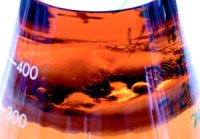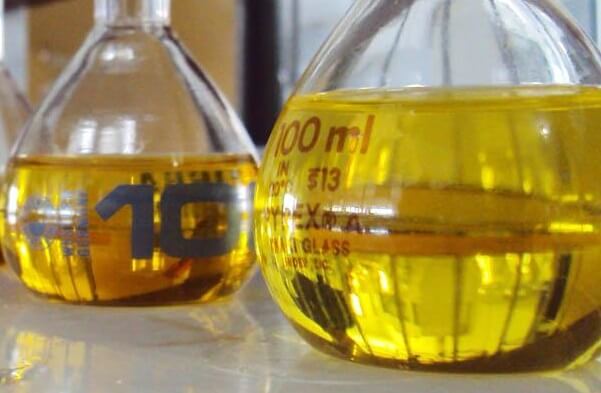Managing microbes in stored fuel: what's the meaning?
Up to this point at the Bell blog, we’ve written no small share of analysis of the available kinds of tests for measuring or detecting microbial...
3 min read
Erik Bjornstad : Jul 5 2019

In a recent post, we were talking about considerations that come from asking the question of ‘what’s the real significance of these microbial test results I’m seeing’. What do they actually mean for me? Remember, there are a number of different kinds of microbe tests that can be purchased in the marketplace that claim to give you information on whether there are microbes in your stored fuel. But they’re not all created equal, and for even the good ones, we have to have the right perspective on what their results actually mean to us.
 In this light, we have to keep in mind that any microbial test is only going to show you a portion of the actual microbiology picture. Culture tests, like dip slides and liquid culture bottles, detect only the microbes that will reproduce on or in the nutrients provided by the test's grwoth medium. Typically, less than 0.1% of the microbes in a fuel sample will grow on any given solid growth medium and less than 1% will grow in a liquid growth medium. ATP By Filtration tests (ASTM D7687) will show you many times more - typically around 80% of the population. That's a tremendous difference.
In this light, we have to keep in mind that any microbial test is only going to show you a portion of the actual microbiology picture. Culture tests, like dip slides and liquid culture bottles, detect only the microbes that will reproduce on or in the nutrients provided by the test's grwoth medium. Typically, less than 0.1% of the microbes in a fuel sample will grow on any given solid growth medium and less than 1% will grow in a liquid growth medium. ATP By Filtration tests (ASTM D7687) will show you many times more - typically around 80% of the population. That's a tremendous difference.
So with any test, you only get a portion of the actul picture. Growth medium is one reason. Another reason for this can be illustrated by looking at what happens when you're testing a sample of a sample.
Start with your fuel storage tank that you’re needing to get a microbe count from. Say it’s a 5,000 gallon tank and you’re going to pull a 1 quart fuel sample that also contains some water bottom. From the start, you’re only taking a sample from one part of the storage tank, and we know that microbes can form concentrated communities in different areas of a given tank or fuel system - in other words, they can grow better or worse in different areas of the same tank. When it comes to measuring things in fuel, this is a key difference from some other physical property tests (like the fuel's density) that are more standard and uniform no matter where you take a sample.
This idea that where you sample from can influence the microbial picture you see is similar to the example of, say, measuring population density - people per square mile. You take a 4 square mile sample location and count the number of people. But you're going to get vastly different numbers if you do this in the middle of a city vs. if you do the counting in a forest. For various reasons, more people live in certain areas. And the same is true for microbes - most of the microbes in fuel distribution systems are, in fact, concentrated in certain areas of the system's surface area (i.e. on the storage tank surface). You can get different microbial pictures if you sample from different places.
So you would want to keep this in mind, that the sample you’re taking will give you part of the picture, but you can never assume it’s a 100% complete diagnostic reflection of everything in there. The more samples you took (and tested) from different areas of the tank, the closer to complete reflection you would move.
But wait, there’s more. Once you have that sample, you’re going to only use part of that to conduct your ATP test on. And microbe counts can actually vary even within that little 1-quart sample that you took away from the storage tank.
For example, a fuel microbiologist knows that in a tank sample with a layer of fuel on top, a microbe-dense interface in the middle (also called a rag layer), and tank water on bottom, he/she could get significantly different microbial counts taking subsamples from different areas of that 1-quart sample. And that’s what you’re going to be doing with any microbe test, you're taking a “sub-sample” or "specimen" from the sample. You’re not going to use the entire 1-quart sample in any of these test methods. The microbial count from fuel taken at the top of the container will be different than one taken from the rag layer interface or even the free water phase. Given that these differences exist, you'll get your most diagnostically useful sub-samples is within a cm above or below where the rag layer and free-water phases meet.
Again, that’s a fact that you have to take into account when you’re assessing the significant and validity of any microbial testing of stored fuel that you’re doing. It’s an inherent margin of error that you always want to keep in mind. Depending on the situation and your resources, you can try to bridge these error gap by maybe doing something like conducting several tests on the subsamples from multiple areas within that sample container. That would start to flesh out the picture for you.
You can never completely eliminate these kinds of considerations, these built-in margins of error. Neither should that imply that because there’s some inherent error buffer, there’s no point in microbe testing (that would be absolutely the wrong conclusion). Scientists have long recognized and accounted for these kinds of variances. They recognize that they’re there, but that’s never stopped anyone from seeking answers to the questions. Pollsters don’t stop surveying sample groups of people about who they’re going to vote for simply because there’s a margin of error that has to be accounted for in a given survey. But it’s important to know that they exist and to keep them in mind as a limitation on the meaning of the results that you’ll be getting.

Up to this point at the Bell blog, we’ve written no small share of analysis of the available kinds of tests for measuring or detecting microbial...
Ask any fleet manager who's been in the business for more than a decade, and they'll tell you the same thing: fuel care used to be straightforward....

We're continuing our blog series on testing for microbes in stored fuel and the issues/considerations that affect what those results may mean...